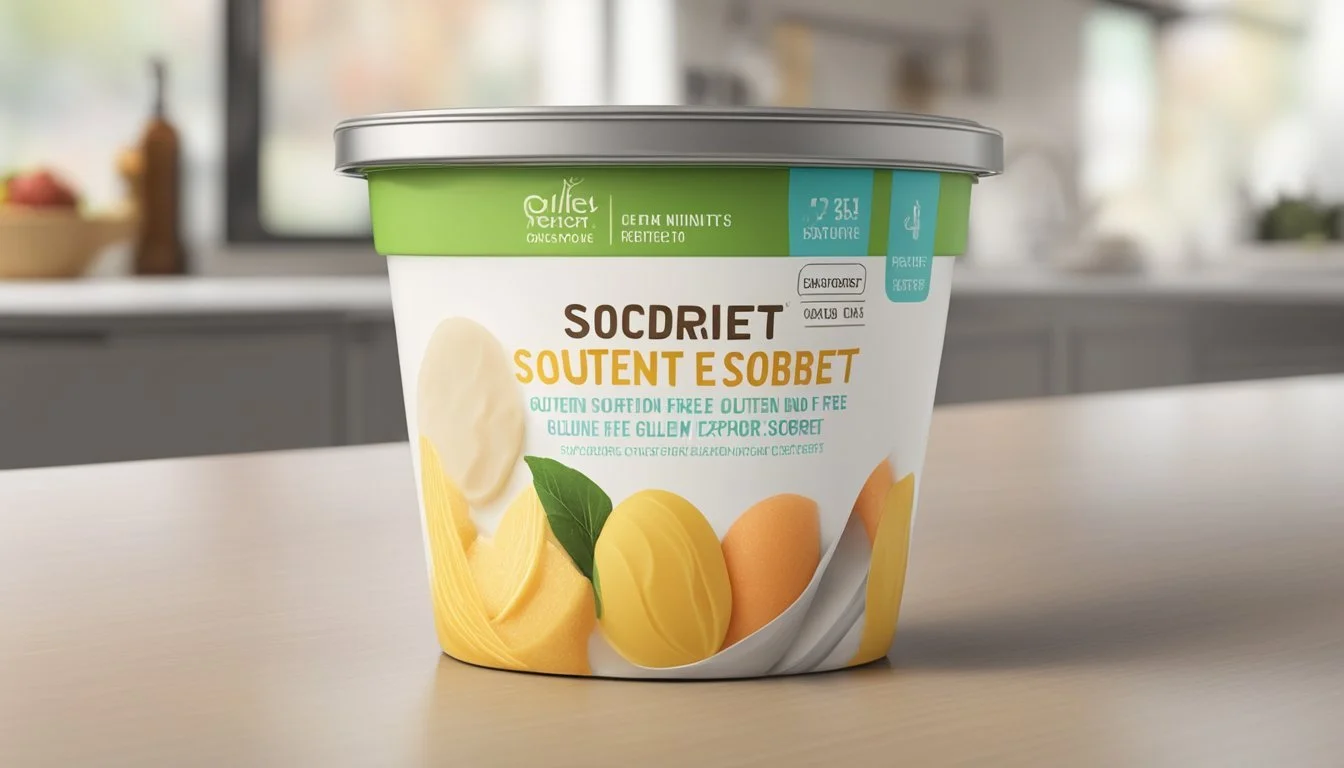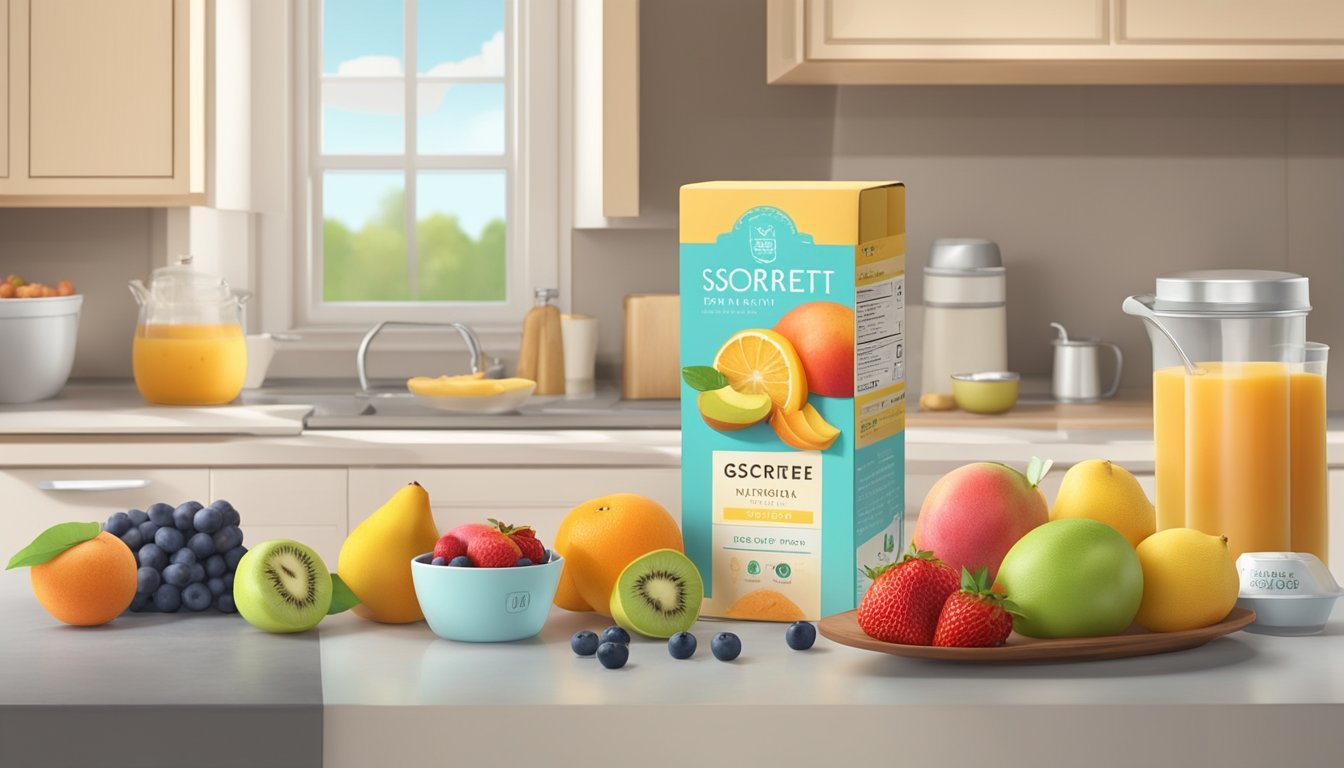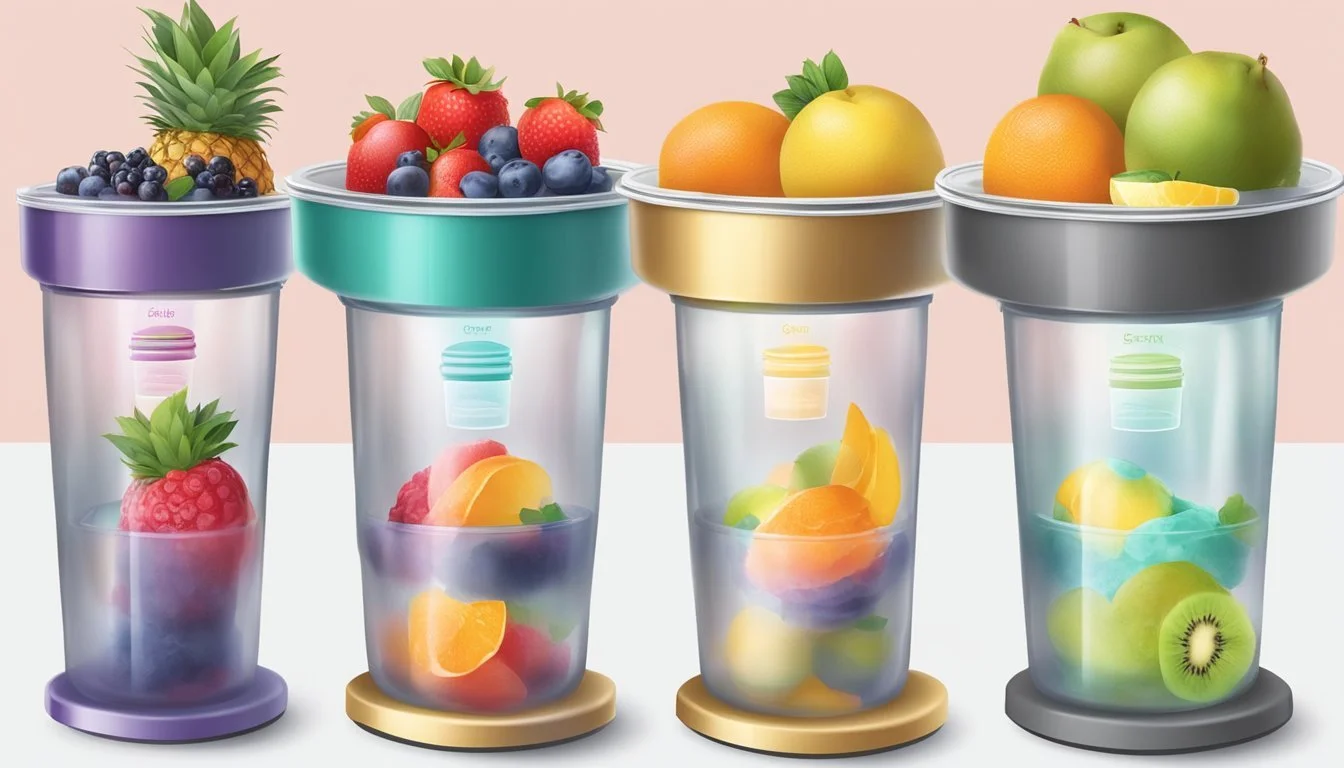How Long Does Gluten-Free Sorbet Last?
Storage Tips & Shelf Life Explained
Gluten-free sorbet is a refreshing alternative to ice cream, perfect for those with dietary restrictions or anyone seeking a lighter dessert option. This frozen delight, made primarily from fruit puree, sugar, and water, is naturally free of both gluten and dairy, making it an excellent choice for various dietary needs. Proper storage is key to maintaining its quality and taste over time.
When stored in a freezer at a constant 0°F (-18°C), unopened gluten-free sorbet can last up to 6 to 8 months. Once the sorbet is opened, it should be transferred to an airtight container to prevent freezer burn and maintain its quality for up to six months. Proper storage not only preserves its texture but also ensures that each spoonful remains as delightful as the first.
For those looking to enjoy their sorbet without compromising on taste or texture, following these storage guidelines is essential. With the right care, gluten-free sorbet remains a delicious and reliable dessert option that can be enjoyed for months.
Understanding Sorbet
Sorbet is a popular frozen dessert made primarily with fruit, sugar, and water. It is naturally gluten-free and dairy-free, making it a suitable choice for those with specific dietary restrictions.
Defining Sorbet
Sorbet is a refreshing frozen dessert that originates from fruit juices or purees mixed with sugar and water. Sorbets are dairy-free and typically do not contain any eggs or cream, differentiating them from other frozen treats. The texture of sorbet is usually smooth and icy, providing a light and refreshing option. Its main ingredients include fruit flavors like lemon, mango, and raspberry, making it a versatile dessert option.
Gluten-Free Certification
To ensure that sorbet is gluten-free, it is essential to check for a certification from relevant authorities. This guarantees that the product is safe for individuals with celiac disease or gluten sensitivity. Labels indicating gluten-free status are crucial as they signify the absence of gluten-containing additives. Additionally, manufacturers must adhere to strict guidelines to avoid cross-contamination during the production process. It's always best to verify by checking the ingredient list and certification labels.
Differences From Ice Cream and Gelato
While sorbet, ice cream, and gelato may all be frozen desserts, they vary significantly in ingredients and texture. Sorbet is dairy-free and primarily vegan, relying on fruit puree or juice for flavor. In contrast, ice cream contains milk and cream, leading to a rich and creamy texture. Gelato, a popular Italian dessert, uses less fat and more milk than ice cream, resulting in a denser and smoother texture. Sorbet remains unique with its lighter and more refreshing consistency, without the richness associated with ice cream and gelato.
These defining characteristics and gluten-free status make sorbet a sought-after treat for those looking for a light, refreshing, and diet-friendly dessert option.
Health and Nutrition
Gluten-free sorbet is not only a refreshing and tasty treat, but it also offers various nutritional benefits and considerations. It is particularly suitable for individuals with specific dietary needs, including those avoiding gluten and dairy.
Caloric Content
Sorbet is generally low in fat, making it a light dessert option. A typical serving of fruit-based sorbet contains about 100-150 calories.
This varies depending on the amount of sugar used and the type of fruit. Sorbets do not contain dairy or protein, unlike ice cream, which makes them inherently lighter. Despite the low fat content, it’s essential to keep an eye on the sugar content.
High sugar levels can lead to increased caloric intake, affecting overall diet balance.
Allergies and Intolerances
Sorbet is a great choice for people with dairy allergies or those who are lactose intolerant. Since it is made from fruit juice or puree, sugar, and water, it is naturally dairy-free.
For those with gluten sensitivity or celiac disease, sorbet is typically gluten-free, making it safe to consume without worry of adverse reactions. Always check ingredient labels or ask at restaurants to confirm, as cross-contamination can sometimes occur.
This can be reassuring for individuals with gluten-related disorders looking for a safe dessert option.
Benefits of Fruit-Based Sorbets
Fruit-based sorbets are not just a sweet treat; they offer various nutritional benefits. Fruit is the primary ingredient, and it provides essential vitamins and minerals.
For instance, sorbets made from citrus fruits are high in vitamin C, an antioxidant that is beneficial for the immune system. Additionally, fruit-based sorbets can offer small amounts of fiber, which aids in digestion.
They are also vegan, making them suitable for those following a plant-based diet. The natural sugars in fruit, coupled with the absence of fat, make sorbet a delicious and relatively health-conscious dessert choice.
Storage and Shelf Life
Storing gluten-free sorbet properly ensures it maintains its texture and flavor. Key factors include maintaining a consistent freezer temperature and monitoring for signs of spoilage.
Optimal Freezer Conditions
For gluten-free sorbet, the freezer temperature should be kept at a constant 0°F (-18°C). Storing sorbet in an airtight container helps prevent ice crystals from forming, which can ruin the dessert’s smooth texture.
Manufacturers recommend consuming sorbet within six to eight months when it’s unopened. Once opened, sorbet can last up to six months if stored in optimal conditions. Keeping the lid tightly sealed prevents freezer burn, ensuring the sorbet retains its intended flavor and quality.
Signs of Spoilage
Detecting spoilage in gluten-free sorbet involves checking both appearance and taste. Look for ice crystals inside the container or any signs of freezer burn, which indicate the sorbet has been exposed to air.
A change in texture—from smooth to grainy—signals the sorbet is past its prime. Additionally, if the flavor becomes bland or off, it may be time to discard it. Maintaining awareness of these spoilage indicators helps ensure the sorbet remains enjoyable and safe to eat.
Making Homemade Sorbet
Homemade sorbet is a delightful, plant-based dessert that is easy to make and customizable to personal dietary needs. Essential ingredients, equipment, and techniques ensure a smooth texture and rich flavor.
Essential Ingredients and Equipment
To make sorbet, the primary ingredients are fruit puree, sugar, and water. Fruit juice and lemon juice add flavor and brightness. For those with lactose intolerance, plant-based ingredients like coconut milk can be used. Corn syrup can sometimes replace sugar to achieve a smoother texture.
Key equipment includes a blender or food processor to puree the fruit. While an ice cream maker is ideal for churning, making sorbet without one is also possible by occasionally stirring the mixture as it freezes. An airtight container is crucial for storing the sorbet and maintaining its texture.
Recipe and Flavor Variations
Start by blending fruits like strawberries, mangoes, or peaches into a smooth puree. For basic sorbet, mix the puree with a simple syrup made from sugar and water. To enhance the taste, add a bit of lemon juice. Explore different fruit flavors and incorporate herbs or spices like basil or ginger for unique twists.
Avoiding added sugar is possible by using naturally sweet fruits or plant-based sweeteners. Sorbets can also be made using a combination of fruit juice and purees, offering endless possibilities. Experiment with layering flavors by creating two-tone sorbets or even swirling different fruit purees together before freezing.
Techniques for Perfect Texture
The key to perfect sorbet texture lies in proper churning and balancing sugar levels. Churning incorporates air into the mixture, preventing large ice crystals. If an ice cream maker is unavailable, manually stir the sorbet every 30 minutes while it freezes to mimic this effect.
Proper sugar balance is crucial. Too little sugar results in a hard, icy texture, while too much sugar leads to slushiness. Corn syrup or invert sugar can help achieve the desired smoothness. Adding a small amount of alcohol, such as vodka, can also prevent the sorbet from freezing too hard.
Maintaining consistent freezing temperatures is vital. Store sorbet in an airtight container to prevent freezer burn and preserve texture. Serve sorbet slightly softened for the best mouthfeel.
Purchasing and Serving Suggestions
When buying and serving gluten-free sorbet, consider the ingredients, brand reputation, and appropriate occasions to enhance the experience. Selecting a high-quality product and knowing how to serve it can elevate your dessert game.
Selecting a Quality Sorbet
Look for trusted brands and manufacturers when choosing gluten-free sorbet. Check the label for a clear list of ingredients, ensuring there are no hidden additives or potential cross-contaminants.
Specialty and health food stores often carry a variety of gluten-free options. It's essential to review the nutritional information to find options suitable for children, diabetics, and vegans.
A good sorbet should have a smooth, consistent texture and vibrant fruit flavors. Avoid products with artificial colors or excessive sugars.
Pairings and Occasions
Sorbet is versatile and can be served at various occasions, from family gatherings to formal dinners. Pair it with fresh fruits, mint leaves, or a light cookie for added texture and taste.
Plating is crucial; consider serving in chilled bowls or martini glasses to keep it at an optimal serving temperature. For a more creative touch, scoop it into hollowed-out fruit shells.
Children love sorbet for its fruity flavors, while adults appreciate its light and refreshing qualities. It’s an excellent option for those with dietary restrictions, providing a delightful treat for vegans and gluten-free guests.







